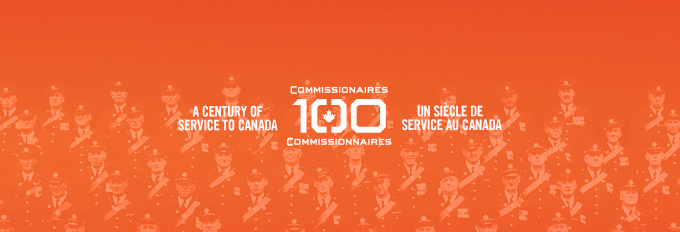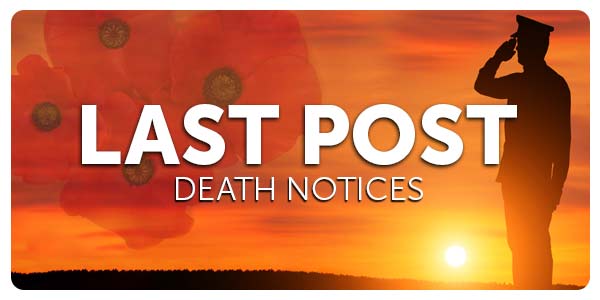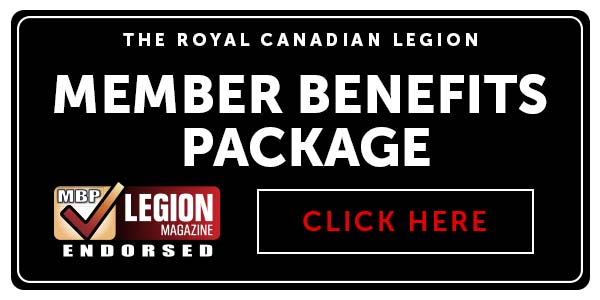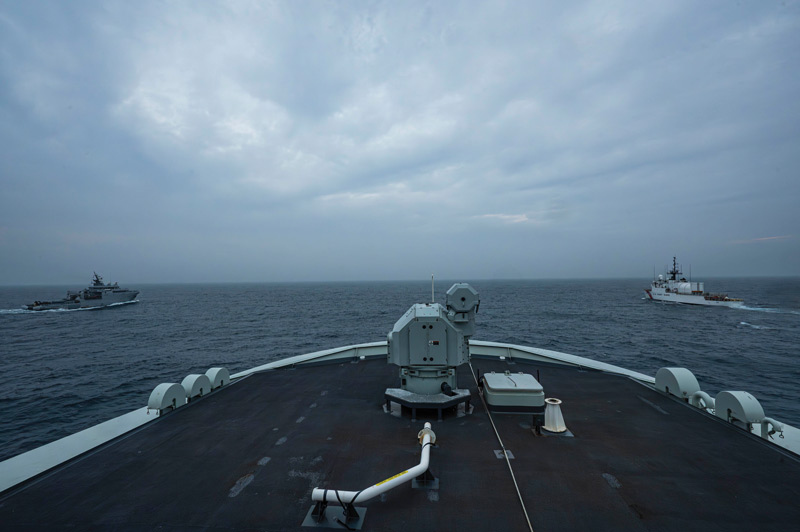
HMCS Harry DeWolf leads a combined maritime task group, including French and U.S. naval vessels, in the North Atlantic on Aug. 11, 2023.[Private Brendan Gamache/CAF photo/Combat Camera]
These days, Canadians have good reason to hit back at U.S. President Donald Trump and boycott American products from Heinz ketchup to Teslas. When it comes to Canada’s security and defence, however, Canadians ought to think very carefully about where their future lies and what measures they must take to maintain the country’s sovereignty and security.
Canada’s modern defence relations with the U.S. date back to the summer of 1940 after France was defeated by Germany and the North American continent was suddenly threatened by Nazi power. At that time, Canada was at war with Germany, but the U.S. was still neutral. Nevertheless, President Franklin D. Roosevelt and Canadian Prime Minister Mackenzie King met at Ogdensburg, New York, on the south shore of the St. Lawrence River to initiate a new direction for both countries given the new threats to the world.
The pair agreed that the defence of North America demanded a joint Canada-U.S. arrangement and created the Permanent Joint Board on Defense (PJBD), which would initiate collaborative plans for continental security and report directly to the prime minister and the president. The agreement was renewed in 1946 by Resolution 37 of the PJBD to co-ordinate North American defence against the threat of communism spreading under the influence of the Soviet Union.
This tie between the two countries was further strengthened by the creation of Norad in 1957. Now, there are hundreds of Canada-U.S. arrangements that govern shared security, dictated by the fact that the nations share a continent and by values of democracy. No president or his regime can invalidate those two basic facts.
As angry as Canadians may be with the current U.S. president’s lack of respect for their countries’ shared history, heritage and accomplishments, they must also understand that they rely on American satellites and radars to protect their aerospace, will soon rely on America’s help to secure Arctic sovereignty, in part by obtaining the best-in-class polar icebreakers, and not forget that the U.S. is their greatest investor. Exports to the U.S. accounted for 19 per cent of Canada’s gross domestic product in 2023, which is by far the most common destination country for Canadian goods (70 per cent of all Canadian exports are destined for the U.S.).
The time has surely come for Canada to stop neglecting defence spending.
How does such integration affect basic policy decisions? First, it can’t risk the existing positive working relationship between the Canadian and U.S. militaries. Second, the infrastructure and strategies to defend the continent must continue to be transborder, especially for air defences, sea approaches and the Arctic frontier. Plus, the ability to proffer military help in times of extreme natural disasters must continue.
It also means that the time has surely come for Canada to stop neglecting defence spending. True, the country is blessed (or cursed) with having the second largest land mass in the world with a population of just 40 million. But that means Canada can’t afford to defend its borders and the world’s longest coastline alone. No matter the political stance of the administration in Washington, Canada must always make continental defence a priority, so that the U.S. won’t question its northern neighbour’s commitment to it.
In response to Trump’s Canadian sovereignty-related ramblings, the federal government has explored aligning itself with Europe when it comes to defence and security. What nonsense. Europe has been as guilty as Canada of relying much too greatly on the U.S. for its defence. Europe now talks of upping its defence game, but for the European Union to create the sort of international defence structure that already exists in North American would likely take the better part of a decade, if it’s even possible.
Canadians must remember, there’s a reason their country has looked to the U.S. for defence equipment since the early 1950s: because it’s very good, if not the best, readily attainable, and owing to the transborder defence arrangements, is easily interchangeable.
So, buy Australian wines rather than American ones and vacation in the Caribbean instead of Florida or Arizona. But, now isn’t the time to disrupt the defence agreements that have kept North Americans safe and secure since the end of the Second World War.
Advertisement




